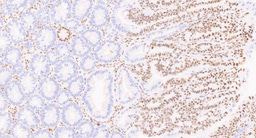Behind the paper- A literature-derived dataset on risk factors for dry eye disease
Published in Healthcare & Nursing
Explore the Research

A literature-derived dataset on risk factors for dry eye disease - Scientific Data
Scientific Data - A literature-derived dataset on risk factors for dry eye disease
It is my great honor to be invited to share our journey on this research as a Behind the Paper blog.
Initially, I planned to conduct a systematic review and meta-analysis to investigate risk factors for the dry eye syndrome.The primary draft for the current study was initiated in 2013. Another related article, ”Risk Factors for Dry Eye Syndrome: A Retrospective Case-Control Study" (PMID : 25756335, DOI: 10.1097/OPX.0000000000000541) analyzing patient data was completed during the same time and was published in 2015.
At that time, the methodological advance did not enable me to integrate cross-sectional together with case-control studies and cohort studies in a meta-analysis.
The original intention of this article was derived from the patients with dry eye disease (DED) encountered in clinical practice and the International Dry Eye WorkShop (DEWS) 2007. In those days, research on the DED in China was not as popular as it is now, and there were other barriers such as partial coverage of medical insurance for the treatment. Artificial tears and steroids were the most commonly used therapies among just a few treatment options that were available in China in early 2010s. In fact, it was because of our in-depth research on the dry eye syndrome that we gained a more in-depth understanding of the gap.
The incidence of dry eye syndrome in China is high. The DEWS committee reported that the prevalence of DED in Southeast Asia is as high as 20.0% to 52.4% and the incidence has been increasing. We observe a similar trend at our clinic, with approximately 60% of the patients who visit an ophthalmologist are diagnosed with the DED in recent years. A significant proportion of these patients are suffering from meibomian gland dysfunction, and quite a few of the non-pharmacological therapies for the DED are not covered by the public health insurance, for example, meibomian gland massage, palpebral margin cleaning, eyelid nebulization therapy, and intense pulsed light. Additionally, there are extra costs on the associated products for some treatments, such as the lacrimal punctal plugs, the moisture chamber glasses, the corneal bandage lenses, and the warm compress eye masks, etc.
I hope that our evidence-based research on risk factors for DED may help tackle the impacts that the DED brings to individual patients and society. Stapleton et al., listed 16 non-modifiable and 17 modifiable risk factors for DED in the DESW II report. They could be further categorized into three categories: 1) consistent evidence-supported, 2) probable risk factors with suggestive evidence, and 3) risk factors yet to be investigated with inconclusive evidence.
Based on my preliminary work in 2013, we selected the probable and inconclusive risk factors that were specified in the DESW II report, to conduct a meta-analysis that evaluated the presence and strength of association between those factors and DED. In March 2022, we submitted our first version of a manuscript entitled “An up-to-date meta-analysis of risk factors for dry eye disease” to Scientific Data. It was our great privilege that although our manuscript was not accepted, the senior editor provided us with a practical and helpful suggestion to report our results as a database which would be eligible to be considered for publication on Data Descriptors. We therefore reformatted and improved the manuscript accordingly, and resubmitted it. One of the major revisions was that the literature search and data extraction were largely expanded in order to provide the most comprehensive and up-to-date information on all reported risk factors, including those of consistent evidence-supported. As a result, the number of included studies increased from 41 in our first version, to 119 in the current article.
DED is a highly complex condition. With the advancement of technology and wearable devices, more risk factors that have been potentially neglected will likely be identified and studied. High-quality data is the basis for good research. As ophthalmologists specializing in cornea and ocular surface, we are keen to witness and participate in the development of DED risk factors research and provide theoretical support for the national public health insurance policy.
I sincerely appreciate everyone for the great contributions to this study and publication of the article: our team for their persistent and hard work, Dr. Veronique van den Berghe the chief editor, Dr. Guy Jones and all the staff from Scientific Data for their constructive suggestions and great help.
Wanju Yang
References
Stapleton F, Alves M, Bunya VY, et al. TFOS DEWS II Epidemiology Report. Ocul Surf. 2017;15(3):334-365. doi:10.1016/j.jtos.2017.05.003
Follow the Topic
-
Scientific Data

A peer-reviewed, open-access journal for descriptions of datasets, and research that advances the sharing and reuse of scientific data.
Related Collections
With Collections, you can get published faster and increase your visibility.
Data for crop management
Publishing Model: Open Access
Deadline: Jan 17, 2026
Computed Tomography (CT) Datasets
Publishing Model: Open Access
Deadline: Feb 21, 2026





Please sign in or register for FREE
If you are a registered user on Research Communities by Springer Nature, please sign in